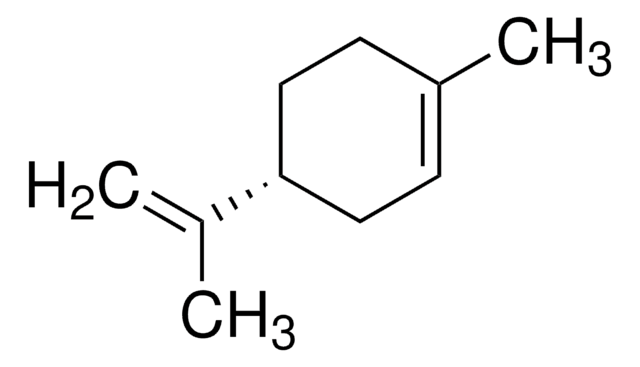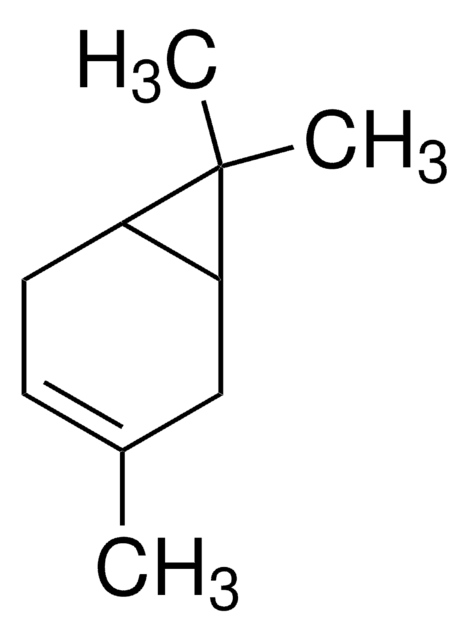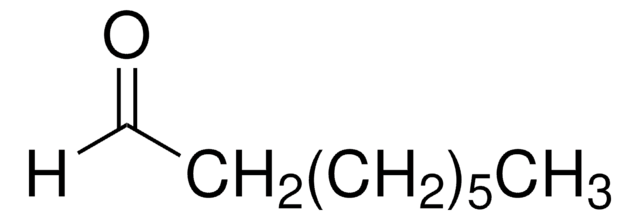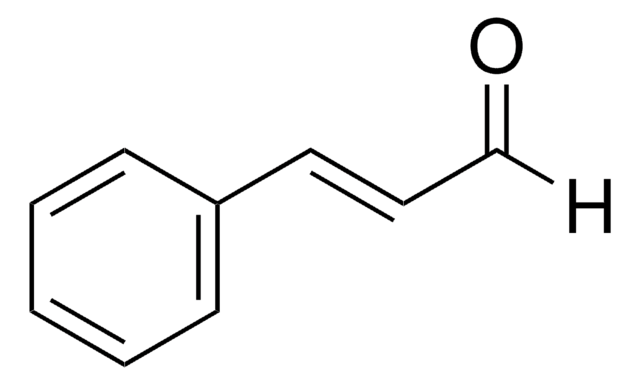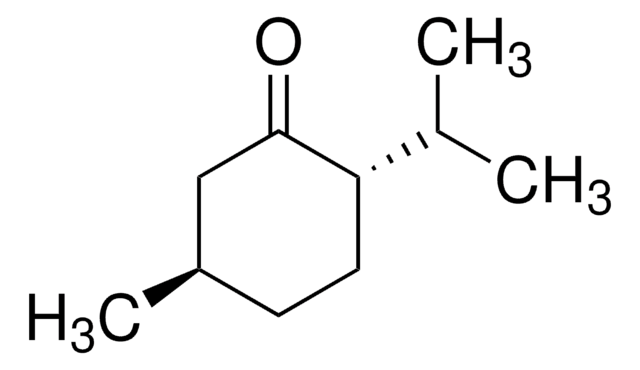43318
Citral
analytical standard
Synonym(s):
3,7-Dimethyl-2,6-octadienal, Geranial and neral mixture
About This Item
Recommended Products
grade
analytical standard
Quality Level
vapor density
5 (vs air)
vapor pressure
0.2 mmHg ( 200 °C)
assay
≥95.0% (cis + trans, GC)
shelf life
limited shelf life, expiry date on the label
technique(s)
HPLC: suitable
gas chromatography (GC): suitable
refractive index
n20/D 1.487-1.489
n20/D 1.488 (lit.)
bp
229 °C (lit.)
density
0.888 g/mL at 25 °C (lit.)
suitability
conforms to structure for Proton NMR spectrum
application(s)
cleaning products
cosmetics
environmental
flavors and fragrances
food and beverages
personal care
format
neat
storage temp.
2-8°C
SMILES string
[H]C(=O)C=C(C)CC\C=C(\C)C
InChI
1S/C10H16O/c1-9(2)5-4-6-10(3)7-8-11/h5,7-8H,4,6H2,1-3H3
InChI key
WTEVQBCEXWBHNA-UHFFFAOYSA-N
Looking for similar products? Visit Product Comparison Guide
Related Categories
General description
Application
- Essential oils using reversed-phase high performance liquid chromatography with photodiode array detection (RP-HPLC-PDA), further confirmed by gas-chromatography coupled to mass spectrometry (GC-MS).
- Cymbopogon citratus volatile oil using high performance liquid chromatography with UV detection (HPLC-UV) and gas chromatography coupled to mass spectrometry (GC-MS).
signalword
Warning
hcodes
Hazard Classifications
Eye Irrit. 2 - Skin Irrit. 2 - Skin Sens. 1
wgk_germany
WGK 1
flash_point_f
DIN 51758
flash_point_c
DIN 51758
ppe
Eyeshields, Faceshields, Gloves, type ABEK (EN14387) respirator filter
Choose from one of the most recent versions:
Certificates of Analysis (COA)
Sorry, we don't have COAs for this product available online at this time.
If you need assistance, please contact Customer Support.
Already Own This Product?
Find documentation for the products that you have recently purchased in the Document Library.
Customers Also Viewed
Our team of scientists has experience in all areas of research including Life Science, Material Science, Chemical Synthesis, Chromatography, Analytical and many others.
Contact Technical Service
